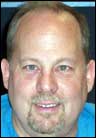Aug 05, 2009Memorial Hospital in Chattanooga, Tenn., required a solution to the costly wastage it experienced in regard to its implantable and surgical devices. The loss of unused and unbilled products was costing thousands of dollars each year, says Scott Hardin, the hospital's cardiovascular services director.
Just last year, in fact, Memorial lost $500,000 because items were simply gone without being billed for, forcing Hardin to adjust his annual budget. "The products had either disappeared, were not charged correctly, or they got moved to the wrong department," he says. Since April of this year, the hospital has been employing an RFID-based system provided by WaveMark to address the problem.
Initially, Hardin envisioned installing an automated system that would enable him to track the use and billing of implantable devices, guide catheters, coronary wires and other high-value products, all of which were being tracked manually by the hospital's nursing staff. Once items were placed on the shelf, nurses were expected to remove them only when needed for surgery, and to denote on paper the names of the patients for whom they were intended. However, an item was often removed from the shelf without any record of the designated patient.
To improve visibility, Hardin considered RFID cabinets, but says these were often bulky and could be utilized only for implantable devices (not catheters, which needed to hang on hooks rather than stack on shelves). He also looked into bar-code solutions, but concluded that bar-coding scanners were too prone to human error; if employees failed to scan an item upon removing it from a shelf, the system could not do its job properly. So he chose the WaveMark solution, which offered space for catheters and a smaller footprint than other RFID cabinets.
With the RFID system, Memorial Hospital's workers receive new products in an inventory room near the receiving dock, scanning each product's bar-coded serial number using a bar-code scanner on a WaveMark desktop reader cabled to a computer. They then use the same desktop device to read a passive 13.56 MHz ISO 15693-compliant RFID tag and attach it to the product, linking that tag's ID number with the bar-coded serial number and other information regarding the product, such as its type, size, expiration date and cost to a patient.
Prior to surgical use, products are stored in cabinets located in various labs. There are 10 cabinets altogether—six fitted with shelves, as well as four specifically designed for hanging products, such as catheters and wires. Within each cabinet are multiple RFID readers—typically, one per shelf, according to WaveMark's director of marketing, Colleen Terry. The interrogators capture the tags' unique ID numbers, forwarding them approximately every 20 minutes to software running on WaveMark's Internet-based server, via an Ethernet cable, along with a time and date stamp.
If a predetermined span of time passes without the product being scanned with a patient's ID number, WaveMark software generates an alert indicating the item is missing and not linked to a patient.
Memorial has already saved money thanks to the system, Hardin says, in part because staff members find it easier to record a product's use, and items are therefore more likely to be billed correctly. The facility has also caught billing errors and thefts, he adds. On one Sunday last month, for instance, four catheters were removed from one cabinet but not used, Hardin explains—an action that was detected by the WaveMark system. Although the catheters were never recovered, because the system was unable to indicate who removed them, the hospital knew they disappeared on that Sunday—a day on which they should not have been removed—and it was thus able to deduce that all four were stolen. With that information, Hardin says, Memorial has now set up a locking system for the cabinet doors, with plans to install security cameras as well.
In another instance, Hardin says, the hospital discovered that two catheters had been used, but that the staff had neglected to bill them to the patients, potentially leading to a loss of $2,500. Because the system caught the error, Memorial was able to correct the mistake and bill for the used catheters.
Hardin says he is ordering two additional cabinets. "I'm trying to get as many things onto this system as I can, now that it has proven its value," he states. To date, Memorial has tagged nearly 12,000 items.


